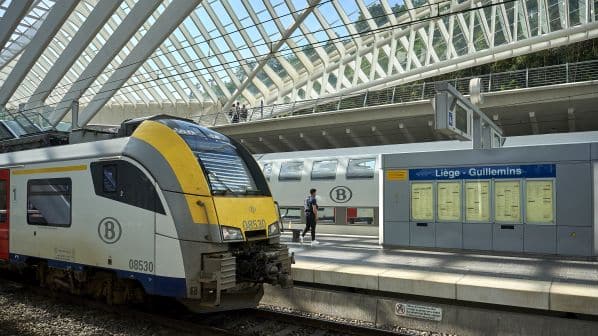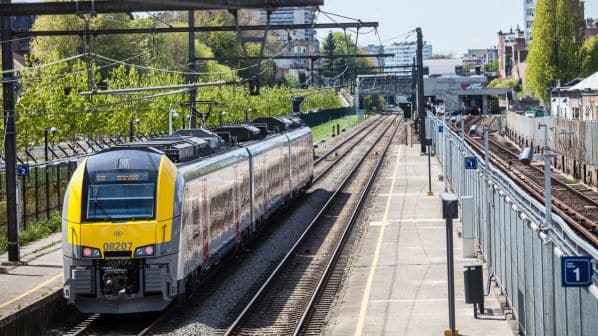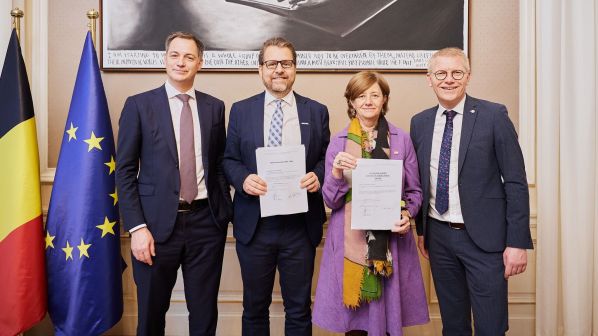FOLLOWING approval by the cabinet, the federal government has signed a PSO contract with Belgian National Railways (SNCB) and a performance contract with infrastructure manager Infrabel for 2023-32.
Business plans and investment programmes for the two companies have also been approved for this 10-year period.
SNCB says that the previous management contracts agreed in 2008 had expired nearly 10 years ago, and that it was “particularly urgent” to agree new 10-year agreements.
The contracts are the fruit of more than a year of negotiations with the Ministry of Transport and are “totally aligned,” according to SNCB, so that targets for increasing the number of passenger services are based on the expected capacity increases delivered by Infrabel’s investment programme.
Based on a business plan that is “robust, ambitious and realistic,” the SNCB contract aims to meet the needs and expectations of its passengers. The operator’s performance against the targets set by the contract will be subject to annual assessment.
A total of 12 performance indicators will be used to assess performance. They include service punctuality, the number of train cancellations and the number of planned connections that are offered.
SNCB will also be assessed on the number of delay-minutes for which it is responsible, rolling stock availability, customer satisfaction and the number of passenger-km recorded on the Belgian national network.
Other performance indicators cover passenger information, the number of stations that are 100% accessible and the number of parking spaces for cars and bicycles at stations. SNCB will also be assessed on its consumption of energy for traction and its carbon footprint.
A system of financial bonuses and penalties will incentivise SNCB to meet these objectives. The 10-year contract makes provision for a mid-term review.

SNCB’s key targets for 2032 include increasing the number of timetabled services by 10% without increasing costs, offering 40% more connections, and increasing the number of suburban services in Brussels, Antwerp, Charleroi, Gent and Liège by 25%.
Early morning and late evening services will be increased, and more trains will serve Brussels and Charleroi airports.
SNCB is also expected to increase the number of passengers it carries by 30%, while considerably improving the customer experience. This will include a simplified range of ticketing products to make rail more attractive, particularly for young people, senior citizens, those with disabilities and groups, promoting more frequent rail travel outside peak periods.
Station investment will include work to double the number of stations that are 100% accessible to 176 by 2032, serving 80% of passengers. The number of bicycle parking spaces is to be increased by 40%.
Rolling stock investment aims to renew 50% of the fleet by 2032. The entire passenger fleet will be air-conditioned and offer multi-functional spaces onboard, with the number of bicycle spaces to be increased by 50%.
Another target is for SNCB is to equip its entire fleet with ETCS by 2025.
Through productivity improvements of 4.5% a year, SNCB is aiming to significantly reduce its debt by €800m to reach €1.6bn by 2032. It is expecting income to increase by 40% as passenger traffic rises.
SNCB will invest a total of €9.2bn over the 10-year period. This comprises €4.2bn for rolling stock, €1.4bn for workshops, €1.8m for station facilities and accessibility, €1.2m for digitisation and €600m for property and other projects.
More funding for Infrabel
To improve network performance and to provide sufficient capacity for increasing passenger and freight traffic, the federal government has approved a €16.4bn package to fund Infrabel in the period from 2023 to 2032.
Including €1.75bn of new funding, this package will see €11bn allocated to the infrastructure manager for investment and €5.4bn for operating and maintaining the network.
Infrabel’s 10-year investment programme will see €7bn spent in two main areas. The punctuality component comprises investment necessary to maintain capacity and to progressively improve train punctuality in the context of the expected rise in passenger and freight traffic.
This includes the objective of removing all speed restrictions due to poor track quality by the end of 2030.

Under the heading of safety, Infrabel is to complete the rollout of ETCS by the end of 2025, making it the first rail network in Europe to be completely equipped with this signalling system, including its continuous ATP function to control train speed.
Infrabel will spend €2bn to accelerate digitisation, prioritising its production process and workshops. Digital technology should also improve traffic control and capacity allocation as well as predictive maintenance.
Of the €11bn in total Infrabel funding, the government is making €1bn available for major infrastructure projects, but this package is still under development.
Projects to increase capacity include serving new port facilities. Work will also be completed on the Brussels RER network, to increase capacity on the route from Ottignies to Namur and the border with Luxemburg, and to provide four tracks between Gent and Bruges.
“Never has the rail sector received so much funding and such clear and ambitious targets from the Belgian government,” says federal transport minister, Mr Georges Gilkinet.
“It is an enormous honour to have carried this project forward over the last two years with our two rail companies. All our energy must now be devoted to making it reality.
“Work is therefore far from over, even more so as SNCB and Infrabel are in the short term facing enormous challenges in punctuality, reliability and human resources that we must meet as quickly as possible.”
For more data on infrastructure projects around the world, subscribe to IRJ Pro.

